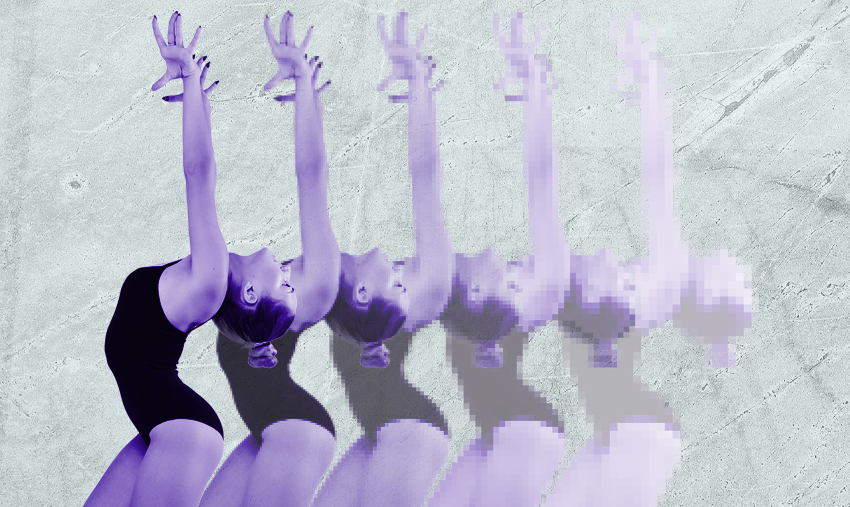Which Olympic gymnastics event is contested solely on a big flat surface?
Don't scroll down until you've answered!

Duh! is a weekly column that gives circuitous answers to obvious questions. If you dig it, you can find 100 more of these essays in the Geeks Who Drink book, Duh!.
Few things we’ll ever cover in this space are likely to be as old as the floor exercise, because let’s face it: People have been throwing mad tricks across flat spaces pretty much as long as there have been people and flat spaces. When ancient Germans came face-to-face with saber-toothed cats on the daily, I bet it was helpful to know some parkour skills, know’m sayin’?
Tumbling as a discipline is known to have been practiced in ancient Egypt and China, but of course we tunnel-visioned Westerners associate it mostly with Greece, where it was part of the original Olympic Games. It was part of the overall sport called “gymnastics,”1 which at the time consisted of quite a few events we don’t consider gymnastics anymore: boxing, wrestling, running, weightlifting, and swimming.
Various empires through the centuries thought they could encourage national vigor and/or military success by making folks tumble and whatnot. But like so many modern sports, gymnastics as we more-or-less know it today didn’t become popular until the 19th century. Echoing his cat-wrasslin’ Teutonic forebears, Prussia’s Friedrich Ludwig Jahn saw the value of strength and flexibility training, and set up a sort of playground on the edge of Berlin that he called the “rabbit field.” The facility became a … ahem, breeding ground for now-familiar apparatuses such as the pommel horse and parallel bars.3 (Alas, he can’t be credited with inventing the floor.)
The floor exercise – for men only, naturellement – made its Olympic debut at the second modern games, Paris 1900, as part of a list of “gymnastics” events so long that it would make even the ancient Greeks goggle. A trio of Frenchmen took home individual all-round medals after competing in: horizontal bar, parallel bars, rings, pommel horse, floor, horse vault, high jump, long jump, pole vault, rope climbing, and weightlifting. We pulled a hammy just typing that.
The (much shorter) modern men’s gymnastics rotation was settled by the 1936 Olympics. That was also the first year women’s gymnastics became a permanent fixture, with their modern event lineup debuting in 1952. Both sexes compete on the floor – which measures 39 feet on each side, lest you wondered – and the event is scored by rules so byzantine and arcane that we have never understood them, no matter how often and how patiently Elfi Schlegel explained them to us.
Since we’ve reached the limits of our expertise on this subject, here’s one of our patented and we’re-sure-endearing lists, of other things that are named for the bottom of a room:
- “On the Floor” was a 2011 Jennifer Lopez hit, based on the achingly beautiful Bolivian folk song “Llorando se fue” (“They left crying”).
- Killing Floor was the first Jack Reacher book, and the basis of the Prime Video series Reacher, thus making it the most successful novel ever to be written about a guy who retrieves cans of food from the top shelf.
- Floor Peijnenburg is a Dutch real-estate agent we saw once on House Hunters International. She helped an empty-nest couple find an affordable apartment near the city center. Good job, Floor!
Footnotes:
- Students of Greek will know that “gymnastics” means “nude exercises,” and indeed the original Olympics were contested entirely by naked people. However revealing modern leotards2 may be, always remember that it could be so much worse.
- “Leotard” is an eponym, named for French acrobat Jules Léotard. Other such clothing namesakes include Chuck Taylor, the Seventh Earl of Cardigan, and Ann-Marie Hoodie.
- Before you start getting attached to old Friedrich, the Smithsonian notes that “His training regimen bordered on militaristic, and directly influenced the Hitler Youth movement of the following century.” We can’t have nice things.
